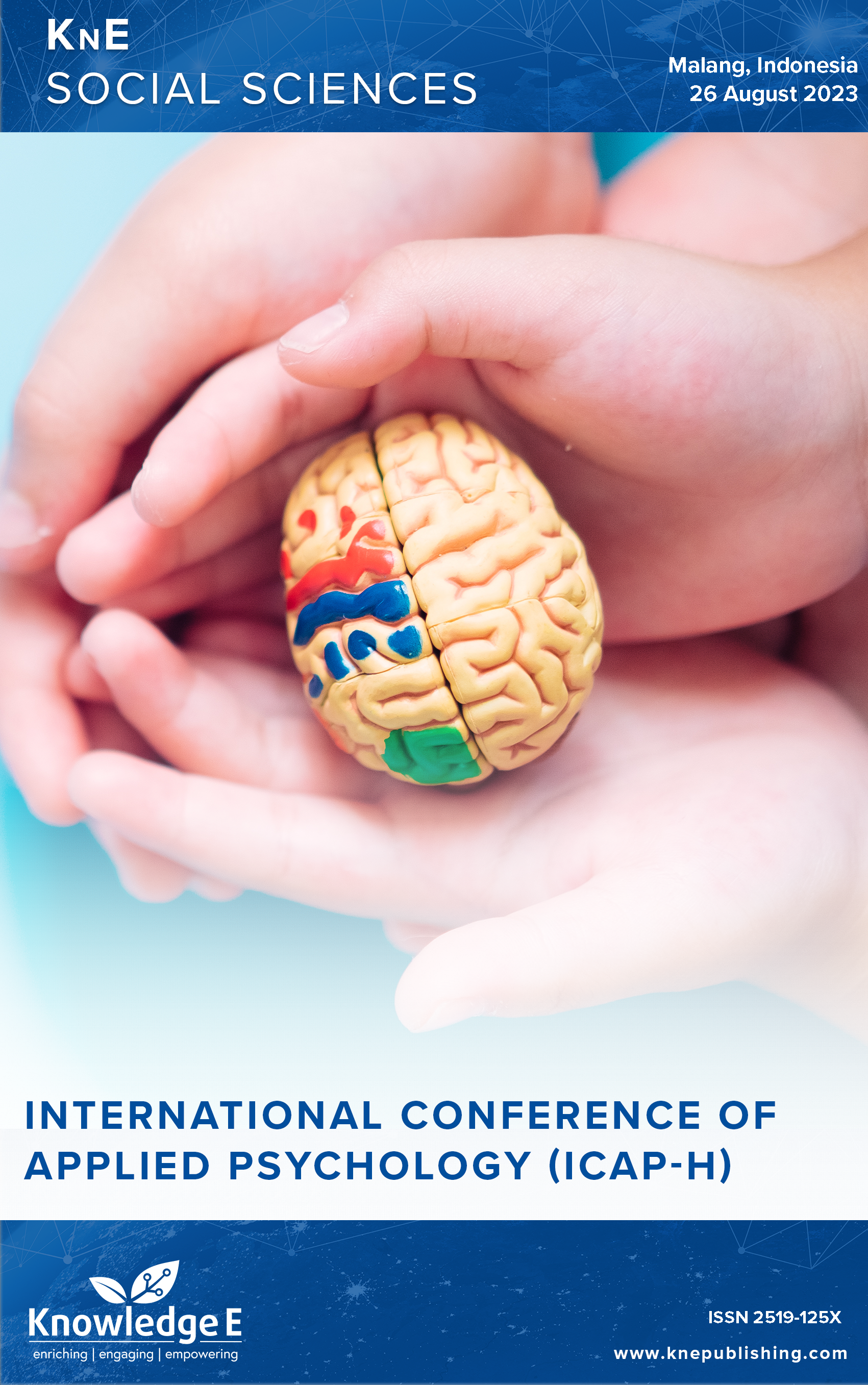The Effect of Future Time Perspective and Community Resilience on Disaster Risk Reduction in Disaster-prone Communities
DOI:
https://doi.org/10.18502/kss.v9i5.15159Abstract
Indonesia routinely experiences disasters in various regions every year. To see that disaster management is currently disaster risk reduction oriented, individuals need to have a future time perspective to anticipate the potential impacts of disasters that will occur. In addition, as we know, community resilience in disaster management policies and practices is currently receiving greater attention. With the quantitative method and multiple linear regression test, this study tries to determine the effect of future time perspective and community resilience on disaster risk reduction in disaster-prone communities. The 57 subjects of this study were 20–45 year-old men and women who live in disaster-prone environments. The subjects were asked to fill out the Future Time Perspective Scale, Communities Advancing Resilience Toolkit, and General Disaster Preparedness Belief Scale. The three scales were disseminated via social media, where anyone could fill them in as long as they met the subject’s criteria of the research. The results of this study indicate that there is an influence of the future time perspective on disaster risk reduction, however, there is no effect of community resilience on disaster risk reduction.
Keywords: community resilience ,disaster, disaster management, disaster risk reduction, future time perspective
References
Simanjuntak T, Ririmasse M. Archaeology of disaster in Indonesia: Where are we now? Ber Sedimentol. 2021;47:17–21. https://doi.org/10.51835/bsed.2021.47.3.351 DOI: https://doi.org/10.51835/bsed.2021.47.3.351
Pambudi NA. Geothermal power generation in Indonesia, a country within the ring of fire: Current status, future development and policy. Renewable and Sustainable Energy Reviews. 2018;81:2893–2901. https://doi.org/10.1016/j.rser.2017.06.096 DOI: https://doi.org/10.1016/j.rser.2017.06.096
Doswell III CA, Brooks HE, Maddox RA. Flash flood forecasting: An ingredients-based methodology. Weather Forecast, Oklahoma: National Severe Storms Laboratory; 1996. 560–581 p. DOI: https://doi.org/10.1175/1520-0434(1996)011<0560:FFFAIB>2.0.CO;2
Pudjiastuti SR. Mengantisipasi dampak bencana alam. JIP ( Jurnal Ilmu Pendidikan). 2019;2:1–14.
Ulum MC. Manajemen bencana: Suatu pengantar pendekatan proaktif. Malang: Universitas Brawijaya Press; 2014.
Purnomo H, Sugiantoro R. Manajemen bencana: Respons dan tindakan terhadap bencana. Yogyakarta: MedPress; 2010.
Djalante R, Garschagen M, Thomalla F, Shaw R. Introduction: Disaster risk reduction in Indonesia: Progress, challenges, and issues. Disaster Risk Reduction in Indonesia: Progress, Challenges, and Issues. New York: Springer International Publishing; 2017. DOI: https://doi.org/10.1007/978-3-319-54466-3
Kooij DTAM, Kanfer R, Betts M, Rudolph CW. Future time perspective: A systematic review and meta-analysis. Journal of Applied Psychology. 2018;103:867–893. https://doi.org/10.1037/apl0000306 DOI: https://doi.org/10.1037/apl0000306
Andre L, Van Vianen AEM, Peetsma TTD, Oort FJ. Motivational power of future time perspective: Meta-analyses in education, work, and health. PLOS ONE. 2018;13. https://doi.org/10.1371/journal.pone.0190492 DOI: https://doi.org/10.1371/journal.pone.0190492
Ma Z, Guo S, Deng X, Xu D. Community resilience and resident’s disaster preparedness: evidence from China’s earthquake-stricken areas. Natural Hazards. 2021;108:567–591. https://doi.org/10.1007/s11069-021-04695-9 DOI: https://doi.org/10.1007/s11069-021-04695-9
Faulkner L, Brown K, Quinn T. Analyzing community resilience as an emergent property of dynamic social-ecological systems. Ecology and Society. 2018;23:24–33. https://doi.org/10.5751/ES-09784-230124 DOI: https://doi.org/10.5751/ES-09784-230124
Nguyen HL, Akerkar R. Modelling, measuring, and visualising community resilience: A systematic review. Sustainability. 2020;12:1–26. https://doi.org/10.3390/SU12197896 DOI: https://doi.org/10.3390/su12197896
Bagrationi K, Thurner T. Using the future time perspective to analyse resistance to, and readiness for, change. Employee Relations. 2020;42:262–279. https://doi.org/10.1108/ER-04-2018-0113 DOI: https://doi.org/10.1108/ER-04-2018-0113
Koliou M, van de Lindt JW, McAllister TP, Ellingwood BR, Dillard M, Cutler H. State of the research in community resilience: Progressand challenges. Sustainable and Resilient Infrastructure. 2020;5:131–151. https://doi.org/10.1080/23789689.2017.1418547 DOI: https://doi.org/10.1080/23789689.2017.1418547
Rijanta R, Hizbaron DR, Baiquni M. Modal Sosial dalam Manajemen Bencana. Yogyakarta: UGM Press; 2018.
Bello O, Bustamante A, Pizarro P. Planning for disaster risk reduction within the framework of the 2030 agenda for sustainable development. Santiago: United Nations Publication; 2021.
Lyu H, Huang X. Development and validation of future time perspective scale for adolescents and young adults. Time & Society. 2016;25:533–551. https://doi.org/10.1177/0961463X16662669 DOI: https://doi.org/10.1177/0961463X16662669
Cui K, Han Z, Wang D. Resilience of an earthquake-stricken rural community in southwest china: Correlation with disaster risk reduction efforts. International Journal of Environmental Research and Public Health. 2018;15:1–14. https://doi.org/10.3390/ijerph15030407 DOI: https://doi.org/10.3390/ijerph15030407
Inal E, Altintas KH, Dogan N. The development of a general disaster preparedness belief scale using the health belief model as a theoretical framework. International Journal of Assessment Tools in Education. 2018;5:146–158. https://doi.org/10.21449/ijate.366825 DOI: https://doi.org/10.21449/ijate.366825
Milfont TL, Wilson J, Diniz P. Time perspective and environmental engagement: A meta-analysis. International Journal of Psychology. 2012;47:325–334. https://doi.org/10.1080/00207590601111090 DOI: https://doi.org/10.1080/00207594.2011.647029
Norris FH, Stevens SP, Pfefferbaum B, Wyche KF, Pfefferbaum RL. Community resilience as a metaphor, theory, set of capacities, and strategy for disaster readiness. American Journal of Community Psychology. 2021;41:127–150. https://doi.org/10.1007/s10464-007-9156-6 DOI: https://doi.org/10.1007/s10464-007-9156-6

